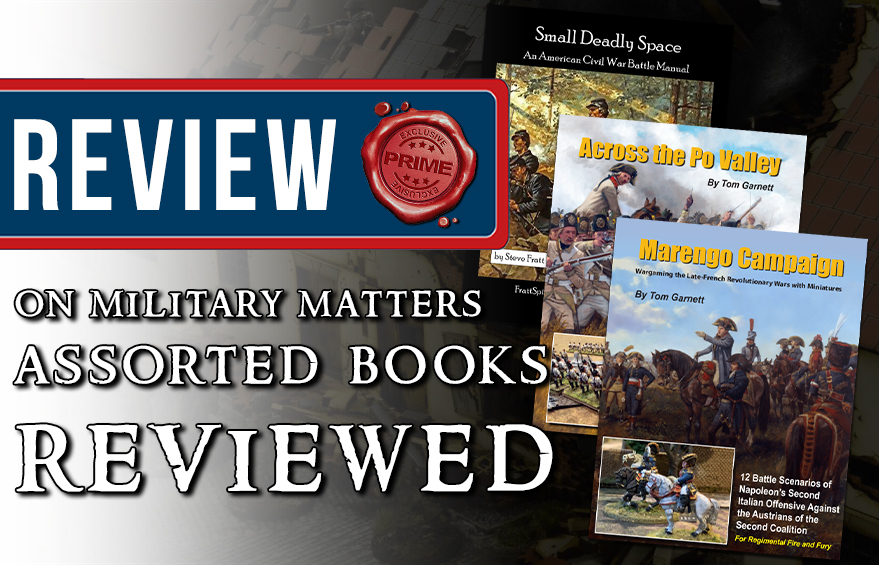On Military Matters - assorted books review We sent our Observation Post skirmishers through On Military Matters’ book library and they returned with this report! Small Deadly Space Second Edition Small Deadly Space 2.0 is an American Civil War battle manual by Steve Fratt that takes an interesting look at the subject matter. Rather than dedicate his attention to the physical factors of warfare, the author (who, as a published Civil War combat historian, a college professor of Military History, and a 20-year veteran of Civil War re-enacting, is not lacking in pedigree) chooses to focus systems on the psychological. Morale and cohesion are tracked on hidden dashboards and act as a primary factor of friction. Division Staff Officers can rally the troops to bring them up, but defeats and fatigue will lower totals, and morale is a key element in the game. It determines whether your men go in, or settle for a protracted firefight, while defenders test against it to determine how much defensive fire they can put out. This is wargaming where leadership and troop psychology are key. If an attack looks like it might stall, then a Staff Officer can rush to join, allowing the attackers to reroll the Close Action dice that determine possible success. Only when a two-to-one result is achieved will a Close Action be decided, which may require more Staff Officers to join the fray. At the end of the turn, every unit that was in combat tests their current morale to see if troop stands are removed from play. That is, of course, just the tip of the iceberg in what is an extremely dense ruleset. The author is unrelenting in detail, with each possibility given specification aplenty; this will greatly appeal to some, but be equally off-putting to others. We certainly felt that getting the exciting bit - the rules - front and centre before tens of pages on different stands and scales would increase the appeal, but you can’t fault the thoroughness, with everything getting a photograph to enhance the description. This slightly odd order of rule presentation, along with the inexplicably oversized text given to the game’s name every time it is mentioned, is our only major criticism, though. The author has taken a different approach to battle here and created a system that flips the focus of players, making the psychology of battlefield trauma a hugely deterministic factor in control and command. The depth here is demanding, and, if you’re after a quick pick-up-and-play game, you should certainly look elsewhere, but the systems will reward patient players with a wealth of simulation options. We also must applaud the number of gameplay examples, all illustrated through photographs showing








